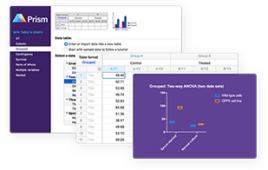Planetary Scientist Jeff Cuzzi Wins Kuiper Prize
Jeff Cuzzi, a planetary scientist at NASA Ames Research Center, Moffett Field, CA, has been named the winner of the 2010 Gerard P. Kuiper Prize, the most prestigious individual award in planetary sciences. The Kuiper Prize is presented by the American Astronomical Society’s Division of Planetary Sciences (DPS). The annual award honors outstanding lifetime contributions to planetary sciences, regardless of nationality or DPS membership. Previous winners include Carl Sagan, Eugene Shoemaker and James van Allen.
“In the 27-year history of the Kuiper Prize, the award has been won by three NASA Ames researchers: Jim Pollack (1989), Dale Cruikshank (2006), and Jeff Cuzzi (2010). No institution — within government or academia — has more Kuiper Prize winners,” said S. Pete Worden, director of NASA Ames.
Cuzzi is being honored because of his many pioneering contributions to our understanding of the formation and evolution of planetary rings and small planets. Spanning four decades, his work includes early observational and theoretical work on rings, participation in NASA’s Voyager and Cassini missions, and his most recent state-of-the art fluid dynamical modeling efforts that will help solve the mysteries of planet formation. During this long search, he has mastered several disciplines, including (but not limited to) radiative transfer, nebular dynamics and cosmochemistry, and often crossed into other fields of research, such as astrophysics and meteoritics. Cuzzi also is an expert observational astronomer, planetary theoretician and planetary modeler — a rare combination.
Cuzzi works in NASA Ames’ Planetary Systems Branch. “He is one of the most respected, admired and sought after individuals in our field. And, of course, Jeff’s long list of awards, clearly signify exceptional scientific achievement,” said Robert Haberle, Planetary Systems Branch chief at NASA’s Ames.
After receiving a bachelor of science degree in engineering physics from Cornell University, Ithaca, NY, he studied planetary science at California Institute of Technology, Pasadena, CA, receiving his Ph.D. in 1972. Trained as a radio astronomer, with an initial focus on thermal emission from Mars and Mercury, he observed Saturn from the U.S. National Radio Astronomy Observatory (NRAO), using its radar interferometer in 1973. He became increasingly drawn to learn about all aspects of Saturn’s mysterious rings, and ultimately rings around other planets as well.
During his early years at Ames, Cuzzi served as study scientist for the first engineering studies of a Titan entry probe, and also worked on the first ultra-narrowband Search for Extra-Terrestrial Intelligence (SETI) study using Mark I Very Long Baseline Interferometer (VLBI) technology. Invited to join the Voyager Imaging team in 1978, he led the team’s rings subgroup through planning of all Saturn, Uranus and Neptune ring encounter observations. In 1989, he was selected as Interdisciplinary Scientist for Rings on the NASA-European Space Agency (ESA) Cassini-Huygens mission. His current ring focus is on the composition of the rings and its evolution with time, and the possibly chaotic dynamics of the F ring region.
Recognized for his outstanding achievements on planetary rings, he received the American Institute of Aeronautics and Astronautics’ Lawrence Sperry Award, and two NASA Exceptional Scientific Achievement medals.
In the early 1990s, Cuzzi started studying fluid dynamics and turbulence in the early protoplanetary nebula, using three-dimensional turbulence models on NASA’s largest computers. For this early nebula research, Cuzzi received another NASA Exceptional Scientific Achievement medal, and was elected Fellow of the American Geophysical Union in 2002. He served as chief of the Planetary Systems Branch of Ames’ Space Science Division from 1992 to 1996.
“His election as a Kuiper Prize winner is a richly deserved external acknowledgement of this legacy of groundbreaking contributions — a legacy, which continues today,” said Haberle.




